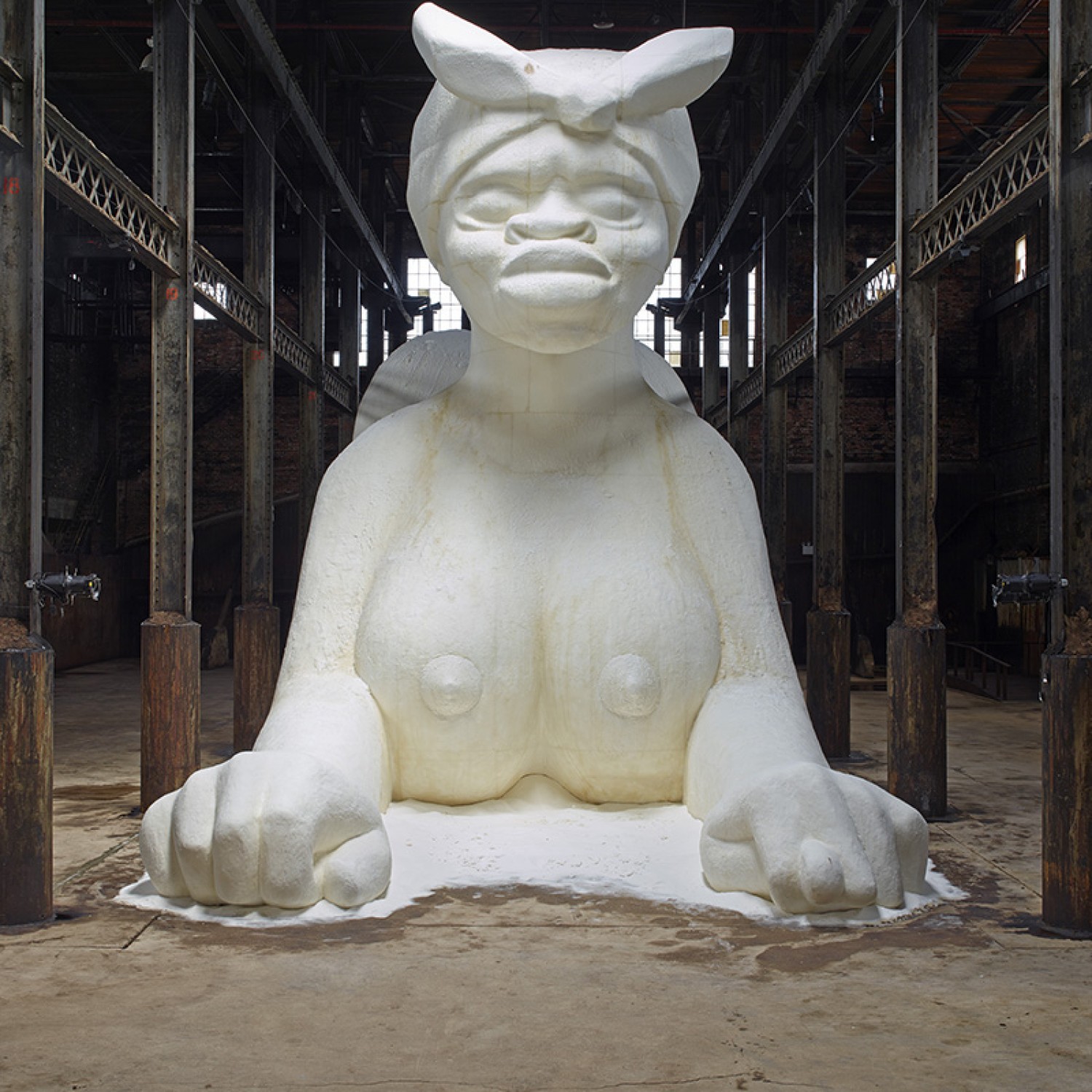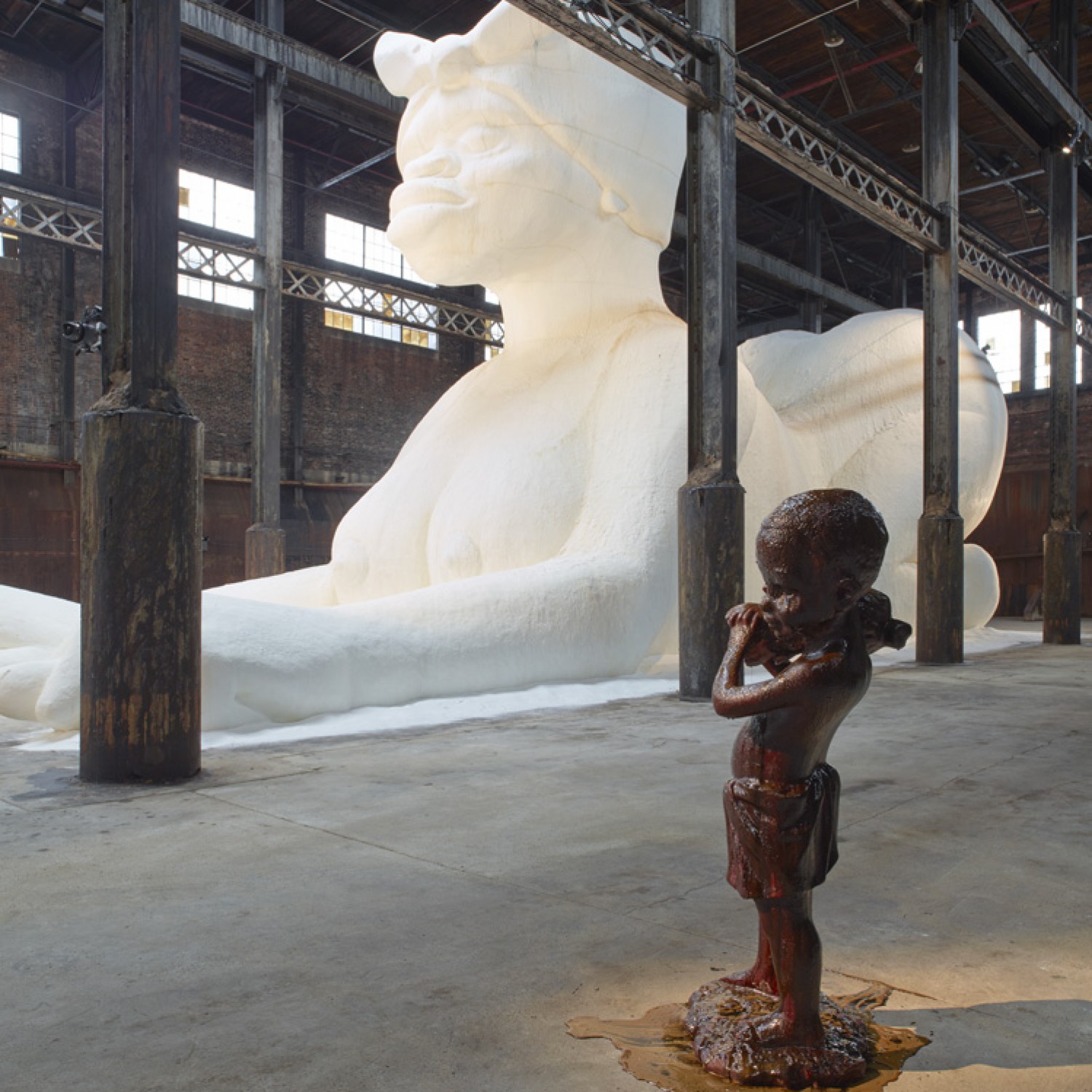Kara Walker’s Fantastical “A Subtlety”
Recently I saw the Kara Walker installation “A Subtlety: The Marvelous Sugar Baby” which was on display at the former Domino Sugar Factory through July 6th. The event was organized by Creative Time, an arts based nonprofit that has commissioned various large scale public art projects with many artists within New York and internationally since 1974. The full title of the piece, “A Subtlety Or The Marvelous Sugar Baby an Homage to the unpaid and overworked Artisans who have refined sweet tastes from the cane fields to the Kitchens of the New World on the Occasion of the demolition of the Domino Sugar Refining Plant” has poetic undertones and underscores many of the complex issues that Walker is driving at within the installation.
On a recent weekend, I made the trek to Williamsburg to see Walker’s installation. When I arrived at the Kent Street waterfront where the Domino Sugar factory is located, I was astounded by the amount of people in line. It extend down the street for almost an entire block. I took my place in the back of line with only my sunglasses to shield me from the hot summer sun and waited. As the line continued to grow, several volunteers for Creative Time emerged to help answer questions and to hand out releases to sign to enter the factory. The line progressed and soon I was in the factory.
When I entered the space, I was overcome by a smell—a pungent, sticky and sweet aroma that seemed to fill the factory. The overwhelming odor was present partly because of the materials Walker used and the build up of molasses on the walls from years of production. As I walked further into the space, I encountered the first part of the installation: fifteen cast sculptures of young boys that were placed throughout the factory floor. Standing at five feet tall, these resin and sugar cast boys are depicted carrying large baskets or bunches of bananas and are reminiscent of the figurines one might buy as a souvenir in a roadside shop. The cast sugar boys show physical signs of being left out in the open for weeks– some had formed a sugar puddle around them while others had parts of their baskets and banana bunches shifting from their original location

Against the backdrop of these sculptures, the sugar woman towers over the sculpture measuring 35.5 feet high by 26 feet wide and 75.5 feet long. The figure is naked, crouched on all fours with her exposed, elongated limbs commanding the factory space. Around the sculpture is trail of sugar which traces the outline of her body. She is beautiful, fantastical, and jarring. It is evocative of the larger meta-commentary Walker is making on the history of the sugar trade but also trudges up issues surrounding race and sexuality. The imagery and subject matter are no stranger to Walker’s work who is best known for her wall installations which use black paper silhouettes that explore race, gender, sexuality, identity and the history of slavery. “A Subtlety” is Walker’s most ambitious work to date and does not back down in the sociocultural issues it is raising.

It is a powerful statement that has been able to engage various communities from the greater New York City area and beyond. From the Domino Sugar factory who donated the sugar for the work, to many volunteers who have come out each weekend to lend a hand in help others enjoy Walker’s work; there are many levels to kind of labor involved in the creation of this work, the labor of the sugar trade and those who have come to view the installation.
One of the volunteers I encountered that day was Shelton Roberts, a retired Domino factory worker who had come back to his former place of employment to help out with Walker’s exhibition. Roberts who worked at the factory from 1984 to 2004, held various position within the corporation. His jobs included being a wash station operator and forklift operator to overseeing the maintenance of the plant in various capacities. When Roberts came across the call for volunteers for the Walker installation he jumped at the chance to help out. Roberts said, “As a volunteer for the Walker installation, it has made me laugh and cry at times. The exhibit is so powerful and it really gives the public to treat to see the work. It also gives them a chance to learn about the sugar refinery process”.
While Roberts is right that Walker’s installation does involve the sugar refinery process, it also serves as a commentary on the history of sugar, the consumption it and what the implications of this are on a larger social scale. While sugar is no longer a luxury, it is through the overwhelming consumption of it that has sparked debates around health, poverty and how it is disproportionally effecting the poor. When you are faced with 80 tons of sugar in a former sugary refinery plant the reality of this conversation becomes illustrated in a new way. In many ways this is exactly what Walker intended for the work to do: to spark imagination, conversation, and debate around an everyday commodity that often is taken for granted. However, as Walker reminds us, the history of sugar and those involved in it, is nothing but complicated.
–Anni Irish


